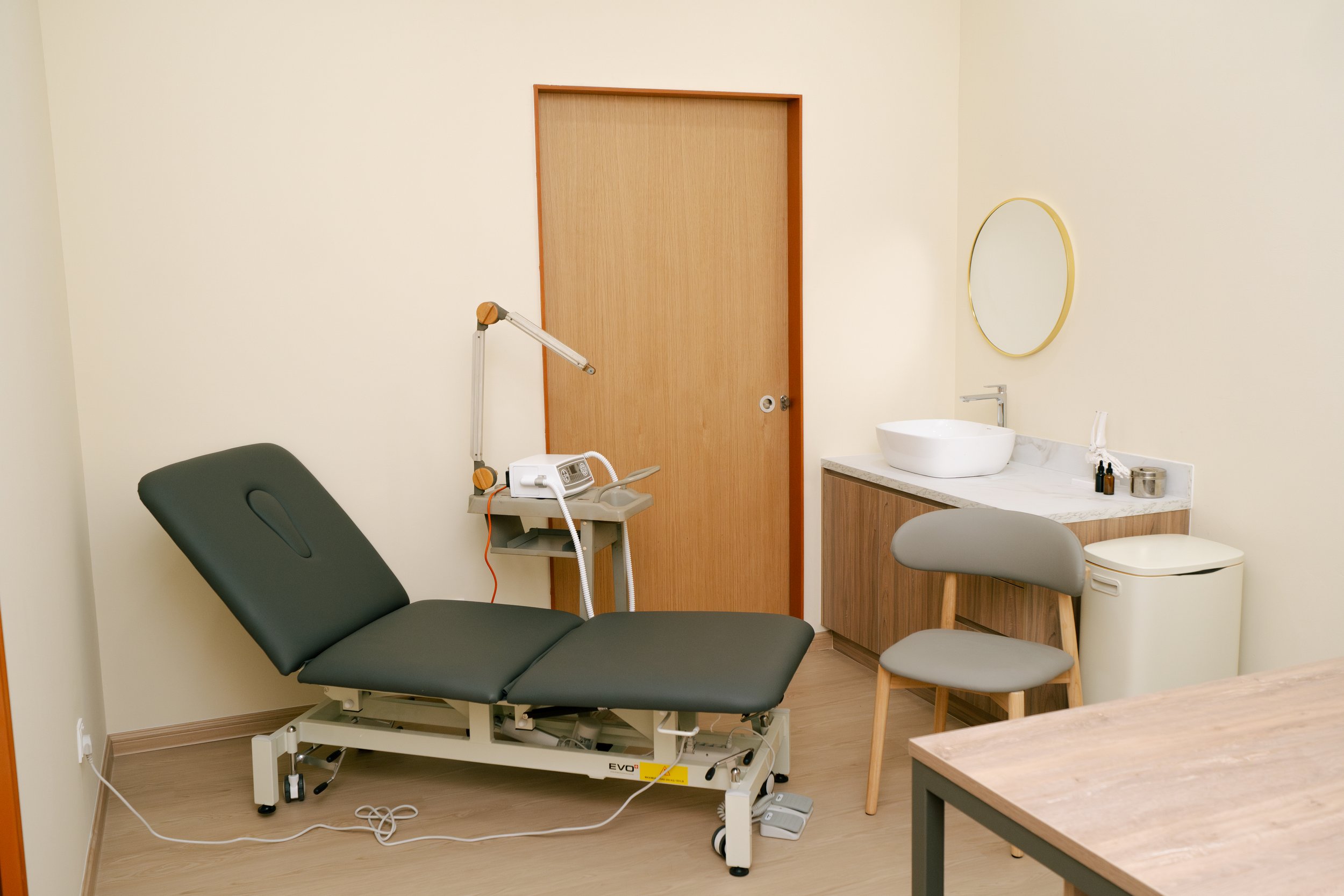
Patellofemoral Pain Syndrome (PFPS)
What Is PFPS?
Your patella (kneecap) glides in a shallow groove on the femur every time you bend or straighten your knee. When the forces on the joint become unbalanced—often a mix of poor muscle control, alignment quirks, and sudden load spikes—the cartilage and supporting tissues become irritated. The result: a dull ache or sharp jab at the front of the knee that stubbornly hangs around everyday activities.
Causes & Risk Factors
Training jumps – abrupt increases in mileage, hills, or plyometrics
High-load knee angles – deep squats, lunges, prolonged sitting (“movie-goer’s knee”)
Excess foot pronation – rolling in creates extra femoral rotation
Hip & quad weakness – poor glute or VMO activation lets the patella drift off-track
Worn-out shoes or hard surfaces
Tight quads & ITB – restrict patellar glide, increasing joint pressure
Previous knee injury or surgery – alters motor control and load tolerance
The common thread? A load-capacity mismatch between what your knee is asked to do and what the surrounding muscles and tissues can safely handle.
Symptoms
Aching, burning, or sharp pain around/behind the kneecap
Pain that worsens with stairs (down > up), kneeling, squatting, or sitting >30 min
Occasional crepitus (“crunching”) without true locking
Swelling is usually minimal, but tenderness along patellar borders is common because PFPS can masquerade as meniscus, tendon, or fat-pad issues, a precise exam matters.
Diagnosis at KL Foot Specialist Podiatry
History & activity audit – onset, training load, workstation habits
Clinical tests – Clark’s sign, step-down, single-leg squat pattern
Strength & flexibility screen – glutes, hip rotators, quads, calves
Gait & foot assessment – video analysis for pronation, cadence, impact peak
Outcome measures – Anterior Knee Pain Scale (AKPS) to track progress
Imaging (ultrasound/MRI) - reserved for red-flags or suspected cartilage, bone, or fat-pad lesions
Treatment: Proven & Personalised
Settle irritation – brief relative rest, ice/NSAIDs if inflamed
Targeted strengthening – progressive hip abductors, external rotators, and quadriceps (emphasis on VMO)
Mobility work – quads, ITB, calves, and hamstrings to restore balanced patellar glide
Movement retraining – step-down and squat drills to reduce knee-in collapse
Patellar taping/bracing – short-term pain relief & proprioceptive cue
Custom foot orthotics – curb excessive pronation and tibial rotation when indicated
DolorClast® Shockwave Therapy – for stubborn soft-tissue tightness or tendinopathy overlap
DolorClast® High Power Laser Therapy – for reducing inflammation and accelerating recovery in patellofemoral pain
Load management plan – graduated return to hills, jumps, or sport-specific drills
We review your AKPS score and functional tests every 3–4 weeks, tweaking the programme so your knee keeps stepping forward.
What If I Ignore It?
Persistent anterior knee pain that creeps into daily life
Reduced activity tolerance—stairs, hikes, or desk work become challenges
Compensatory hip or back pain from altered movement patterns
Longer rehab if cartilage irritation sets in
Tackling PFPS early keeps recovery simple and swift.
Prevention Tips
Gradual training progression (10 % rule)
Strengthen hips, core, and quads twice weekly
Replace shoes before midsoles pack out (~600–800 km)
Break long sitting periods with micro-breaks & quad pumps
Include dynamic warm-ups and cool-down stretches
Use a step or squat cadence that avoids inward knee collapse
Consider orthotic review if you overpronate or have alignment issues
Tired of Achy Kneecaps? Let’s Fix That.
Our podiatry team combines biomechanics, exercise therapy, and state-of-the-art treatments to resolve PFPS and future-proof your knees.
Book an appointment with KL Foot Specialist Podiatry today and stride out of pain—for good.
